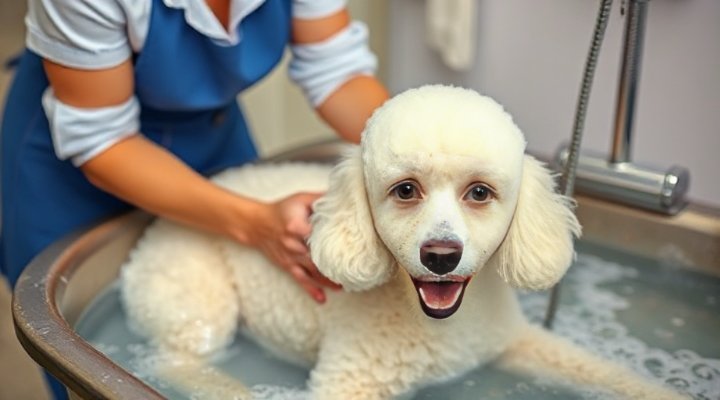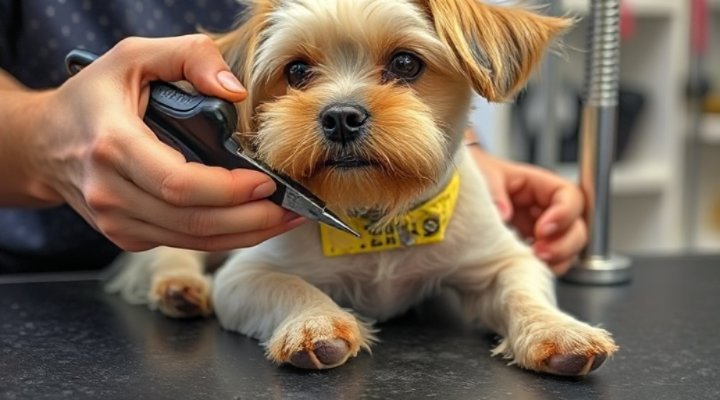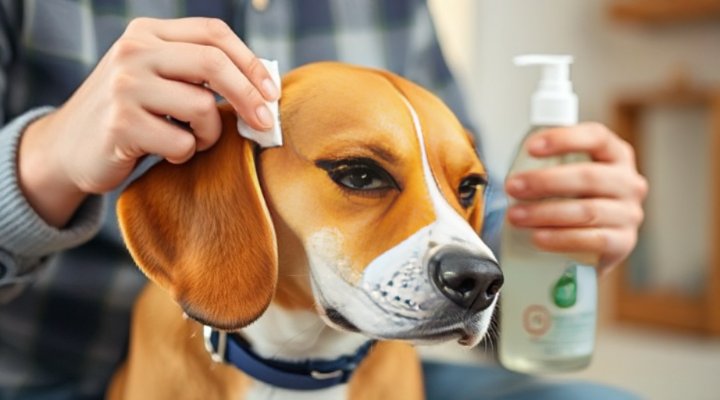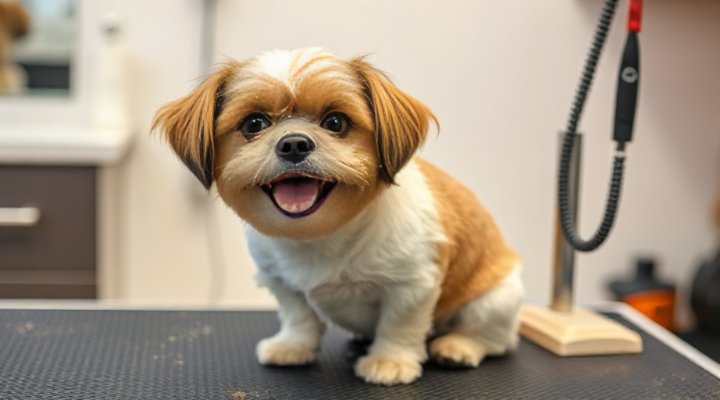Dog grooming is much more than just keeping your pet looking adorable (though that’s certainly a nice bonus!). Regular grooming sessions are crucial for your dog’s health and wellbeing. In fact, proper dog grooming can help you spot potential health issues early, from skin irritations to unusual lumps. Moreover, it’s a wonderful bonding experience that strengthens your relationship with your furry friend.

The Essential Dog Grooming Routine
Every dog needs a basic grooming routine tailored to their breed, coat type, and lifestyle. Here’s what a complete dog grooming session should include:
Brushing: More Than Just Detangling
Regular brushing is the cornerstone of good dog grooming. It removes dirt, spreads natural oils throughout the coat, prevents tangles, and keeps the skin clean and irritant-free. For short-haired breeds, a weekly brushing might suffice, while long-haired dogs often need daily attention. I remember when I first adopted my collie mix – I quickly learned that skipping even one brushing session meant dealing with painful mats!
Different coat types require different tools. Slicker brushes work well for most coats, while undercoat rakes are ideal for double-coated breeds. Always brush in the direction of hair growth, and be extra gentle around sensitive areas like the belly and ears.

Bathing: Finding the Right Balance
Bathing frequency depends on your dog’s breed and activities. While some dogs need monthly baths, others can go longer between washes. Over-bathing can strip essential oils from your dog’s skin, leading to dryness and irritation. Always use a shampoo specifically formulated for dogs – human products are too harsh for their skin.
When bathing your dog, ensure the water is lukewarm. Start by wetting the coat thoroughly, then apply shampoo from neck to tail, avoiding the eyes and ears. Rinse completely – leftover shampoo can cause itching. For particularly dirty dogs or those with skin conditions, consider professional grooming services.
Nail Care: More Important Than You Think
Many dog owners dread nail trimming, but it’s a vital part of dog grooming. Overgrown nails can cause pain and even affect your dog’s gait. If you hear clicking on hard floors, it’s time for a trim.
Use sharp, guillotine-style clippers or a grinder designed for dogs. Cut small amounts at a time, avoiding the quick (the pink area containing blood vessels). If you’re nervous, ask your vet or groomer to demonstrate proper technique. For dogs who resist nail trims, positive reinforcement training can help create a more pleasant experience.

Specialized Grooming Needs
Beyond the basics, some dogs require additional grooming attention:
Ear Cleaning: Preventing Infections
Dogs with floppy ears or those who swim frequently need regular ear cleaning. Use a vet-approved ear cleaner and cotton balls – never Q-tips, which can damage the ear canal. Gently wipe the visible part of the ear, and stop if your dog shows discomfort. Signs of infection include redness, odor, or excessive scratching.

Dental Care: Not Just Fresh Breath
Dental disease is common in dogs, but regular teeth brushing can prevent many problems. Use a dog-specific toothbrush and toothpaste (human toothpaste can be toxic to dogs). Start slowly, letting your dog taste the toothpaste first, then gradually introduce brushing. The AVMA recommends daily brushing for optimal dental health.
Coat Trimming: More Than Cosmetic
Some breeds benefit from regular haircuts to prevent matting and overheating. While you can learn to trim your dog’s coat at home, complex cuts are best left to professionals. If you’re interested in learning more, check out our dog grooming courses online.

Making Grooming a Positive Experience
Many dogs are nervous about grooming, but you can help them learn to enjoy it:
- Start young – puppies who experience gentle handling grow up to be more comfortable with grooming
- Go slowly and keep sessions short at first
- Use plenty of praise and treats
- Watch for signs of stress like panting or trembling
- Make it a regular routine
Remember, dog grooming should be a bonding experience, not a battle. If your dog is extremely resistant, consider consulting a behavior specialist for help.
When to Seek Professional Help
While many aspects of dog grooming can be done at home, there are times when professional help is best:
- Complex haircuts for certain breeds
- Severe matting that requires careful removal
- Dogs with extreme fear or aggression during grooming
- Medical conditions requiring special care
The ASPCA recommends regular professional grooming every 4-6 weeks for many breeds.
Final Thoughts
Proper dog grooming is an essential part of responsible pet ownership. It keeps your dog healthy, comfortable, and looking their best. By establishing a regular routine and making it a positive experience, you’ll strengthen your bond with your pet while ensuring their wellbeing. Remember, every dog is different – what works for one may not work for another. Pay attention to your dog’s individual needs and don’t hesitate to seek professional advice when needed.
Related keywords: professional dog grooming, dog hygiene care, pet grooming tips, dog bathing techniques, canine nail trimming, dog ear cleaning, dog coat maintenance, positive grooming experiences
